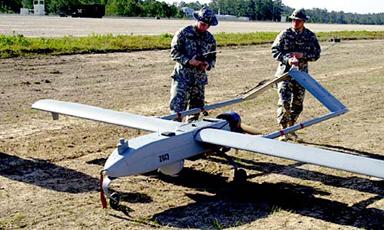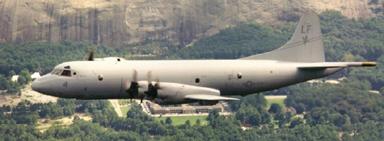![]() 1st Battalion 22nd Infantry
1st Battalion 22nd Infantry ![]()
1st BCT at NTC November 2005
RAIDER BRIGADE COMPLETES MILESTONE FOR UPCOMING IRAQI CAMPAIGN
By
Maj. David J. Olson
1st BCT, 4th ID PAO
FORT HOOD, Texas – The 1st Brigade Combat
Team, 4th Infantry Division planted another milestone as it
prepares for another campaign
in Operation Iraqi Freedom. The Raider Brigade recently returned
from Fort Irwin’s National Training Center in
California’s Mohave Desert
after another successful rotation, which certified it is ready
for its mission and immediately surged in its efforts to depart.
“There is a great deal of work to do to move a large
organization like the Raider Brigade”, said Maj. Carlos
Powell, the brigade’s logistic officer.
“Right now, the biggest part of our preparation is loading
equipment to ship it to our destination.”
The brigade will soon send its vehicles and equipment containers
by rail to the port for shipment.
The Soldiers of the Raider Brigade accomplished many noteworthy
feats during their NTC rotation.
“We were able to bring many of our digital systems to bear
as we engaged the enemy during the High-Intensity Conflict
phase,”
said Maj. Buddy Frick, the brigade’s effects coordinator.

Shadow 200 Unmanned Aerial Vehicle (UAV)
On Training Day Four, the Shadow Unmanned Aerial Vehicle spotted
a bunch of enemy artillery vehicles.
The intelligence officer forwarded the grid coordinates, which
were then sent to meteorology and the data sent to the guns.
The ammunition was cross-leveled and the unit fired the mission,
said Frick.
“Our first mission destroyed four 2S19 (artillery systems)
and suppressed seven others,” said Frick.
“Our second mission destroyed one 2S1 (artillery system) and
suppressed five others.”
On Training Day Five, 1st Battalion, 22nd Infantry
Regiment was moving through some passes
and a Navy P-3 Orion aircraft spotted 12 T-80 tanks west of Crash
Hill.
“The P-3 sent the digital imagery of the enemy tanks to the
Brigade’s Tactical Operations Center,” explained Frick.
The Air Force liaison officer in the TOC, who was using Type Two
control, called in an Air Force F-16 Falcon
and U.S. Marine Corps AV-8 Harrier aircraft to kill the tanks.
Four T-80 tanks were destroyed.
In Type Two control, one person observes the target and another
guides the aircraft onto the targets,
whereas in Type One control, an observer on the ground speaks
directly to the aircraft to bring it to the target.
“The S2 gave us direction with the ‘Named Areas of
Interest,’” said Ensign Stephen Murray,
the naval liaison officer from the Hawaiian-based Patrol Squadron
47. “We would direct the cameras on the P-3 to the
NAIs.”
The whole event was fabulous said Murray, with a lot of
coordination between the Army, Air Force, Navy and Marine Corps
elements.
“This is the first time the Rover Three (an intelligence
surveillance reconnaissance system) has been used in a training
exercise in the States,”
added Murray. The Rover Three is a Windows-based system that
receives the video feed from the aircraft.
“Later the same day, using P-3 and Hunter [UAV] video feeds,
we spotted other units
and killed two 2S19 artillery pieces using the F-16 and AV-8
close air support,” said Frick.

Navy P-3 Orion
On two occasions with information operations, the USS Lincoln,
from the U.S. Navy’s Third Fleet off the Calif. Coast,
produced (information) products for the brigade and flew them via
HH-60 Seahawk helicopter to the 52nd Infantry Division.
“Our … teams were able to distribute the products to
the Iraqi villages,” said Frick.
Later during the exercise on Training Day Seven, the Fires Effect
Coordination Cell was conducting a targeting meeting
and debating how to eliminate enemy mortarmen, who were harassing
several U.S. base camps with mortar fire.
The debate generated some lively and interesting conversation. A
non-lethal effects operator provided one theory:
“Gentlemen, we need to get the mad mortarman a better paying
job that will motivate him not to be the mad mortarman
anymore,”
said Lt. Col. Greg Gaweda, special functions officer with 360th
Civil Affairs Battalion.
A lethal operator provided another, more direct approach:
“Sir, if we kill everyone who shoots a mortar no one will
want his job,”
retorted Chief Warrant Officer Paul Franks, the brigade targeting
officer. Over the course of the next several days,
the Raider Brigade used a combination of lethal and non-lethal
methods to reduce the mortar threat.
On Training Day 14, the P-3 was seeking movers and saw a
suspicious vehicle, said Capt. Brian Wallace,
a U.S. Air Force B1 bomber pilot assigned to 11th Air Support
Operations Squadron at Fort Hood.
Two AV-8B Harriers were on station watching the whole event, but
they had to break contact to link up with a tanker for refueling.
Those aircraft relayed their information to two other Harriers.
The two AV-8B Harriers were able to follow the vehicle,
and it stopped in the town of Al Jabar. The Harriers relayed
their information to Wallace in the TOC, who passed it to the
unit on the ground.
A patrol from the ground unit, 1st Battalion, 22nd
Infantry Regiment, found the vehicle,
searched it and dealt with the bad guys.
These are some examples of how the Raider Brigade’s
performance during the NTC rotation.
After completing a rigorous training program prior and the
culminating event conducted at the NTC,
brigade leaders said the Raider Brigade is ready to deploy and
conduct any mission in Iraq that it is given.
Nov 2005
Home | Photos | Battles & History | Current |
Rosters & Reports | Medal of Honor | Killed
in Action |
Personnel Locator | Commanders | Station
List | Campaigns |
Honors | Insignia & Memorabilia | 4-42
Artillery | Taps |
What's New | Editorial | Links |